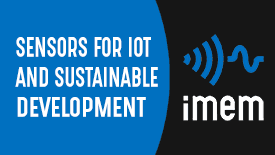The experimental activity aimed at developing biosensors of interest in the medical field consists in the fabrication and characterization of devices belonging to the family of Organic Electrochemical Transistors (OECTs) and making use of organic conductors deposited on flexible substrates.
OECTs show a versatile character in terms of allowed applications that is mainly due to their ability in promoting an efficient ion-to-electron transduction. For this reason, OECTs represent the ideal candidate for the interfacing with biosystems, whose function is ruled by ionic signals, and are proven to be an essential tool for the implementation of biosensing devices and platforms.
Device architectures designed at the IMEM institute are aimed at implementing solutions capable of covering a range of biosensing applications based on the detection of biosystems upon using biomarkers and probes/primers of interest in the field of nanomedicine. The flexible and biocompatible character of materials used for the device manufacturing allow obtaining conformable and implantable tools. Such devices show peculiar properties that, if required, make them integrable with systems conceived for customized care, such as devices for the controlled and smart release of drugs (drug delivery) to a specific target site, in view of the design of Point of Care testing devices.
The experimental activity at the IMEM institute is focused on the development of several kinds of biosensors:
- Integrated microfluidic OECTs for the detection of biomolecules/carriers of interest for the delivery and controlled release of drugs (drug delivery) such as micelles, liposomes and metallic nanoparticles opportunely decorated. This kind of systems have been furthermore exploited as laboratories for monitoring the evolution of rheological properties of biomolecules proposed for the delivery of drugs (micelles) as well as electrochemical properties of biological pigments such as the eumelanin, whose overproduction is a reliable indicator of the presence of cancerous pathologies.
- Highly selective biosensors for the detection of protein molecules and enzymes of medical interest, such as cytokines and thrombin, respectively, showing a limit of detection (LoD) falling into the physiologic range (in most cases, picomolar range). The implementation of solution with marked specificity takes advantage from chemical functionalization of device interfaces carried out by specific antibodies or nucleic acids (aptamers). Functionalization techniques in combination with the use of 2D carbon-based conductors (multayered graphene) covered with metal nanoparticles make possible the design of sensors able to minimize false-negative results.
- Biosensors based on the integration between OECTs and commercial membranes for cell culture (polycarbonate based Transwell™) conceived for developing a tool able to study the response of cell sustems upon external stimuli. Such devices have shown to be particularly suitable for the testing both the effectiveness of antitumor drugs on cancer cells and for monitoring the adaptive cell response to hyperosmotic stress. In detail, in the first case such tool allows discriminating cellular death mechanisms (apoptosis vs. necrosis) induced by the drug action that generally, at low drug doses, is not permitted to standard cellular assays, while in the second case it allows a detailed analysis of the of the early stage of cellular shrinkage induced by variation of physiologic environment.
- 3D-OECTs fabricated by using laser stereolithography 3D printers for the fine detection and monitoring of skin perspiration.
- Passive and amplifying electrodes (the latter, based on a three electrodes OECT-like architecture) for the recoding of biosignals (ECG, EMG). Such devices, developed in the context of a collaboration between IMEM and Camlin Ltd. carried out in the joint laboratory Camlin-IMEM, are manufactured by Additive manufacturing techniques (in particular, Aerosol Jet Printing) using innovative biodegradable substrates based on biomaterials that are non-irritating in contact with the human skin.








